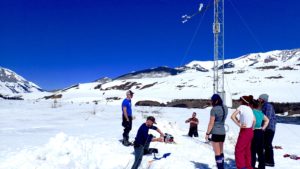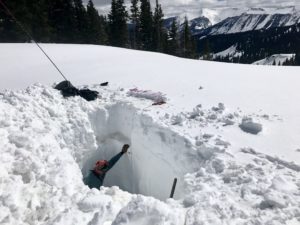A brief update is below on site conditions at East River and in particular the Pumphouse floodplain. These dates correspond to conditions during or very near peak discharge at this location.
June 5th, 2017:
June 7th, 2017:
Additionally, included is a video of the shale outcrop and associated water line relative to the incised marker bed that Joel Rowland has observed in the past and which he considers to represent the last high water runoff mark. We’re very close to this level this year.


